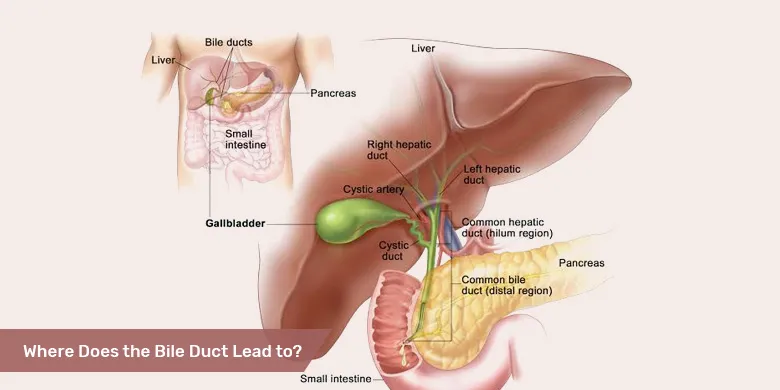Where Does the Bile Duct Lead to?
You might think of the bile duct as a tube acting as a connecting link between two organs of the body, but the underlying phenomenon isn’t that simple. You need more information about where does the bile duct leads to. Here’re brief facts about the beginning and ending points of the tract.
The term ‘bile duct’ suggests that it is something carrying bile. Also called gall, bile is a fluid that the liver secretes to aid in the digestion of lipids in the small intestine. Other than water, it contains bile salts, bilirubin, fats, and inorganic salts. From this information, you can infer that one end (or origin) of the bile duct lies somewhere in the liver.
Where Does the Bile Duct Begin?
While learning about where does the bile duct leads to, you will come across the similar terms like the hepatic duct, cystic tract, common bile duct, and common hepatic duct. Basic knowledge of all these terms is essential to understand the main concept.

Fig. 1: Where Does the Bile Duct Lead to?
Hepatic and Common Hepatic Ducts:
The hepatic duct is a canal that collects the biliary secretions from different parts of the liver. It begins inside of the liver and ends at the point where the right and left hepatic ducts combine to form a common hepatic duct. The right hepatic duct is the tube that drains bile from the right side of the organ. On the other hand, the left hepatic duct is the tube that collects biliary fluid from the left functional lobe of the liver.
Cystic Duct:
The common hepatic duct also makes a connection with the gallbladder through a small tract of varying length, called the cystic duct. In other words, the cystic duct is the canal that connects the gallbladder with the common hepatic duct.
Common Bile Duct:
The common hepatic duct coming from the liver joins the cystic duct from the gallbladder to form the common bile duct. Normally measuring 8 mm in diameter, the duct varies in length from 55 mm to 150 mm. The length of the tract also varies across genders. In the female, it is usually shorter and may reach a length of up to 95 mm.
Where Does the Bile Duct Lead to?
The common bile duct continues downward from the point of its formation towards the end where it is to empty its contents into the duodenum. Moving towards its terminal point, the bile duct is also joined by another canal, called the pancreatic duct.
The two tracts join to form the ampulla of Vater. At the point of its connection with the duodenum, the ducts are surrounded by a muscular sphincter, called the sphincter of Oddi. This sphincter regulates the release of the bile into the small intestine.
Named after an Italian physiologist, Ruggero Oddi, the sphincter closes to push the bile into the gallbladder for temporary storage. The stored and concentrated biliary fluid in the gallbladder can then enter the duodenum as the sphincter relaxes and opens the entry into the intestine.


